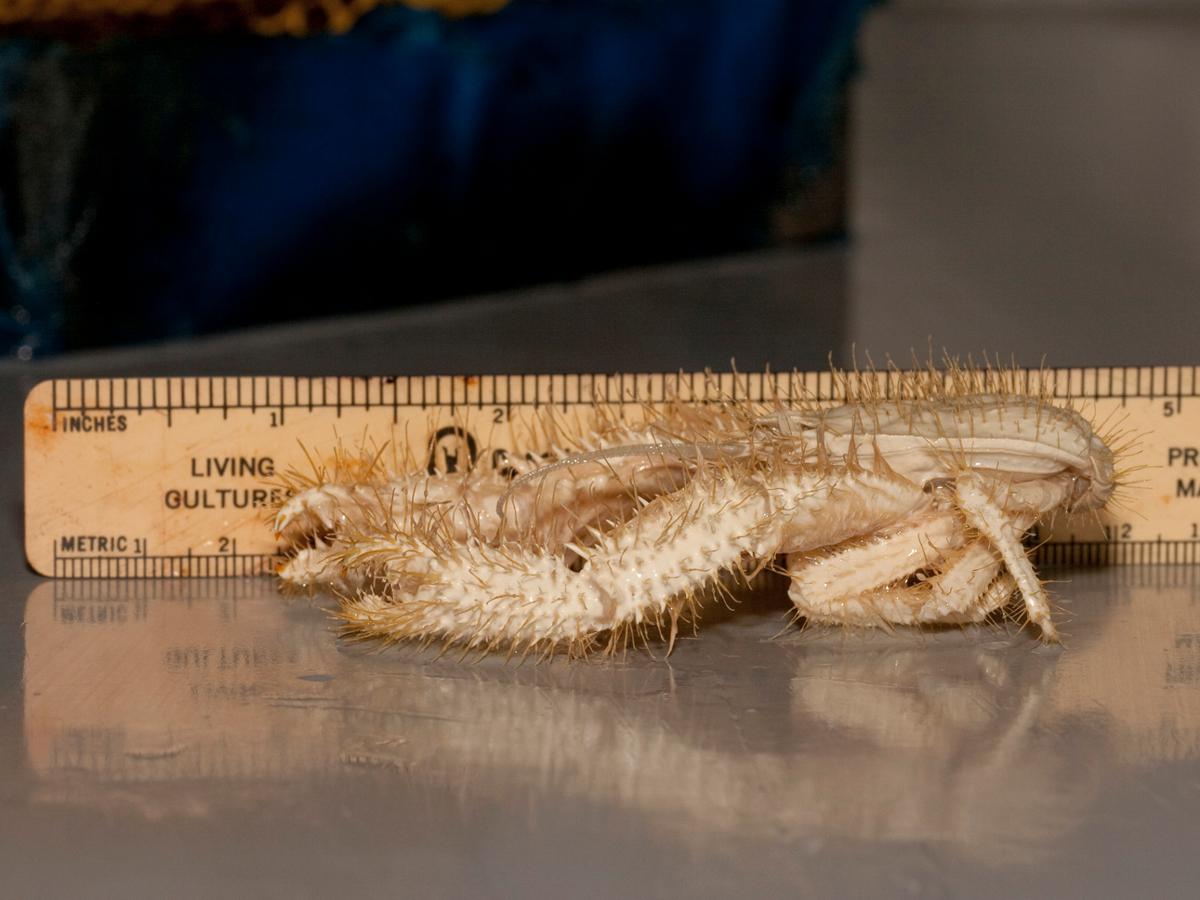D: Hey, Yaël, I’ve been reading about some strange creatures. Ever heard of the yeti? He’s big, covered in white fur, and he’ll grab you with long claws…
Y: I hate to disappoint you, Don, but I think that’s just a legend. I can offer you the next best thing, though: how about a yeti crab?
D: What? A crab is nothing like the abominable snowman I just described!
Y: This one is! Like your creature, the yeti crab is white, and its long claws are covered in pale fur. And sure, at 6 inches long, it’s not exactly big, though it’s definitely strange. The crab lives at the lips of hydrothermal vents, thousands of feet below the ocean’s surface.
D: Ah, I’m familiar with those—the vents are where lava rises up and splits the seafloor. These vents heat the water around them and gush minerals and metals, like hydrogen sulfide and methane. Plenty of bacteria flourish down there on that gushing vent fluid; I didn’t realize crabs could, too.
Y: It’s thanks to that bacteria that the yeti crab can survive. The fur on the crabs’ claws is actually something called “setae”—dense bristles that are covered in that vent-loving bacteria. A yeti crab will scrape off the bacteria with its mouth. Yum, dinner!
D: Seems like a dull life: no sunlight, no colorful markings, no variety of diet.
Y: Well, don’t forget the best part! In order to feed the bacteria on their claws, the yeti crab will constantly wave its arms through the mineral-rich water. When you get a group of these crustaceans together, the result is an endless yeti crab dance party.










